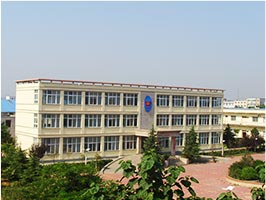无硼捣含硼捣打料对比实验说明Comparison experiment description of boron-free and boron-containing ramming mass for induction furnace
无硼捣含硼捣打料对比实验说明
含硼捣打料主要包括以硼酸(H3BO3)和硼干(B2O3)为主要结合剂的石英硅质捣打料,硼酸在加热时分解以B2O3形式存在于沙料中,在温度1000-1300度时,B2O3和硅砂中的SIO等形成低熔点物质sio2.B2O3,从而降低了硅砂的熔点,改善烧结条件,提高了捣打料的烧结强度。加之热传导效率以及传导厚度等因素,在中频炉升温过和使用过程中,使捣打料层有效分为烧结层,半烧结层和松散层。
同时在高温(1600度)以及中温(1100度)对试样耐压强度的分析与对比,如图:
Comparison experiment description of boron-free and boron-containing ramming mass for induction furnace
Boron-containing tamping material mainly includes quartz silica tamping with boronic acid (H3BO3) and boron dry (B2O3) as the main binding agent, boric acid decomposition in B2O3 form of sand material during heating, at the temperature of 1000-1300 degrees, B2O3 and SIO in silica sand form low melting point material sio2.B2O3, thus reducing the melting point of silicon sand, improve sintering conditions, improve the sintering strength of tamping material. In addition, with the heat conduction efficiency and conduction thickness and other factors, the tamping layer is effectively divided into sintering layer, sintering layer, semi-sintering layer and loose layer.
At the same time, the analysis and comparison of the sample compressive strength at high temperature (1,600 degrees) and medium temperature (1,100 degrees), as shown in the figure:
与无硼结合剂实验结果对比如下表:
|
|
有硼捣打料 |
无硼捣打料 |
|||
|
项目 |
B2O3& (H3BO3) |
原使用材料 |
优化实验指标 |
||
|
抗折强度 |
11 |
4.6 |
7.2 |
7.6 |
9.7 |
|
耐压强度 |
15.6 |
15.04 |
22.71 |
22.43 |
19.78 |
备注说明:
抗折强度是指材料单位面积承受弯矩时的极限折断应力。又称抗弯强度、断裂模量。通常指耐火泥料或陶瓷材料受到弯曲负荷的作用而破坏时的极限应力。
耐压强度:火材料在一定温度下,单位面积上所能承受的极限载荷。耐压强度是衡量耐火材料质量的重要性能指标之一,间接地反应出制品的组织结构,如致密性、均匀性、烧结性等。
根据对比实验结果以及数据,含硼捣打料在抗折强度以及晶体重建,抗体积膨胀等方面确实优于无硼捣打料。无硼捣打料在烧结强度特别是高温烧结强度大幅优于含硼捣打料。如配合好半烧结层以及松散层,有利于大幅提升使用寿命。
Note:
Resistance strength refers to the ultimate breaking stress when the material per unit area bears the bending moment. Also known as flexural strength, fracture modulus. Usually refers to the limit stress when the refractory clay or ceramic material is damaged by the action of bending load.
Compressive strength: the ultimate load that the fire material can withstand per unit area at a certain temperature and temperature. Compressive strength is one of the important performance indicators to measure the quality of refractory materials, which indirectly reflects the tissue structure of the product, such as compactness, uniformity, sintering property, etc.
According to the comparative experimental results and data, boron-containing tamping material is indeed better than boron-free tamping material in resisting bending strength, crystal reconstruction and resisting volume expansion. The sintering strength of boron-free tamping material is much higher than that of boron-free tamping material, especially at high temperature. If combined with good semi-sintering layer and loose layer, is conducive to greatly improve the service life.
河南宏达炉业
河南省功能不定形材料研究中心
2022年8月23日



